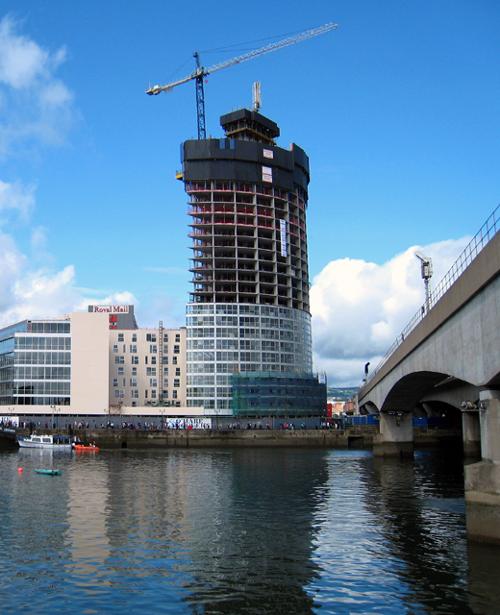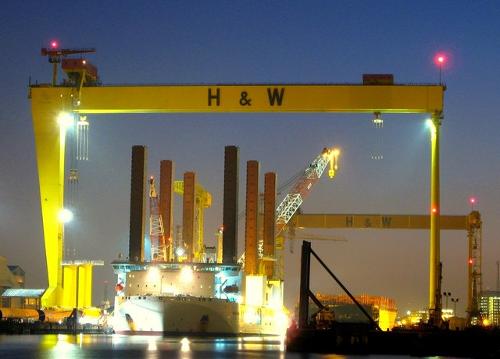NORTHERN IRELAND
Economy

Economy
Cities in NORTHERN IRELAND
| Belfast |
Popular destinations UNITED KINGDOM
| England | Northern ireland | Scotland |
| Wales |
Economy
General
 Building activity Belfast, Northern IrelandPhoto: Ross CC 2.0 Generic no changes made
Building activity Belfast, Northern IrelandPhoto: Ross CC 2.0 Generic no changes made
Northern Ireland has traditionally been the least prosperous part of the United Kingdom. The London government is trying to improve this by making Northern Ireland attractive to foreign investors. The British government itself has also invested billions of euros in the Northern Irish economy in recent decades. A lot of subsidy also came in from Ireland, the EU and especially from the United States. As a result, economic productivity and gross domestic product grew and unemployment fell.
The Northern Ireland economy focuses mainly on the rest of the United Kingdom and the Republic of Ireland.
Economic sectors
 Harland and Wolff docks in Belfast, Northern IrelandPhoto: Ross CC 2.0 Generic no changes made
Harland and Wolff docks in Belfast, Northern IrelandPhoto: Ross CC 2.0 Generic no changes made
Most of the 1.7 million Northern Irish people live on the east coast, in the highly industrialized cities of Belfast and Londonderry.
Beyond that, Northern Ireland has remained a predominantly agricultural society. Three percent of the labor force works in agriculture, and fishing is practiced along the coast. A typical local agricultural product is flax, from which linen is made. Important other products are barley, potatoes, wheat and oats. However, most of the money is earned from animal husbandry.
Northern Ireland is not rich in minerals, but the soil supplies sand, gravel, lime, clay, basalt and slate, among others. Large quantities of lignite (bituminous wood, a type of brown coal) have been found in the Antrim district.
The basic industries of shipbuilding, linen and agricultural products are rapidly declining in importance and are being taken over by other aircraft construction, food and tobacco, footwear, clothing and textiles. Furthermore, the car industry, the rubber industry and the chemical industry are given extra incentives. However, these high-quality industries do not provide much more jobs; this does happen in the services sector, which already employs more than 70% of the workforce, including the boom in tourism.
Sources
Cahill, M. J. / Northern Ireland
Chelsea House Publishers
Day, C. / North of Ireland
Cadogan
Wikipedia
CIA - World Factbook
BBC - Country Profiles
Last updated November 2025Copyright: Team The World of Info